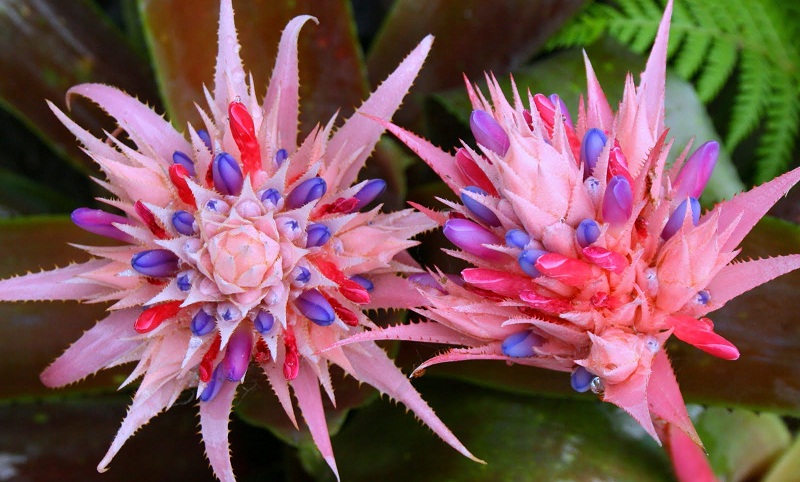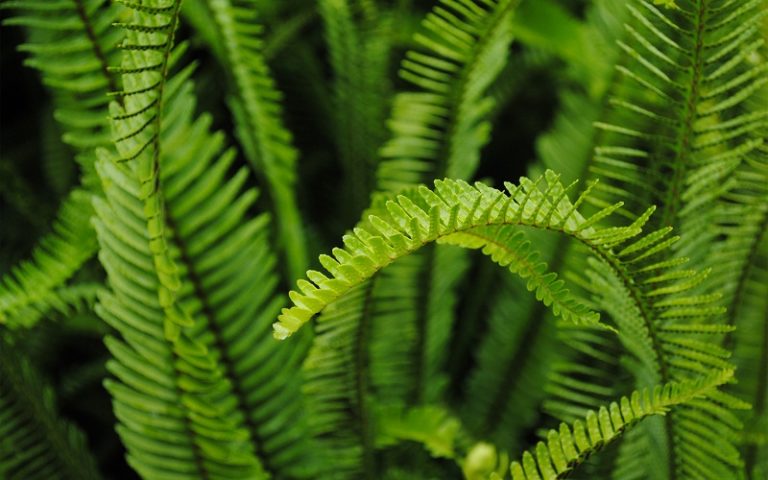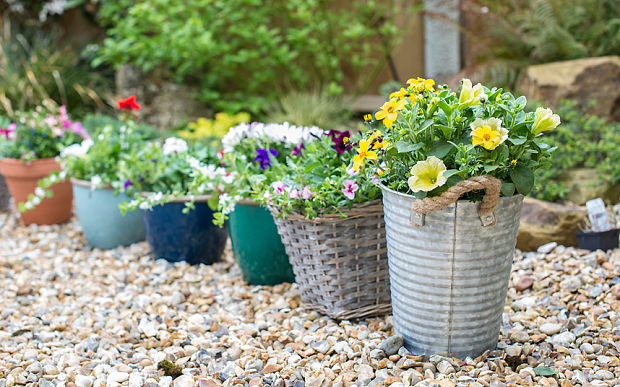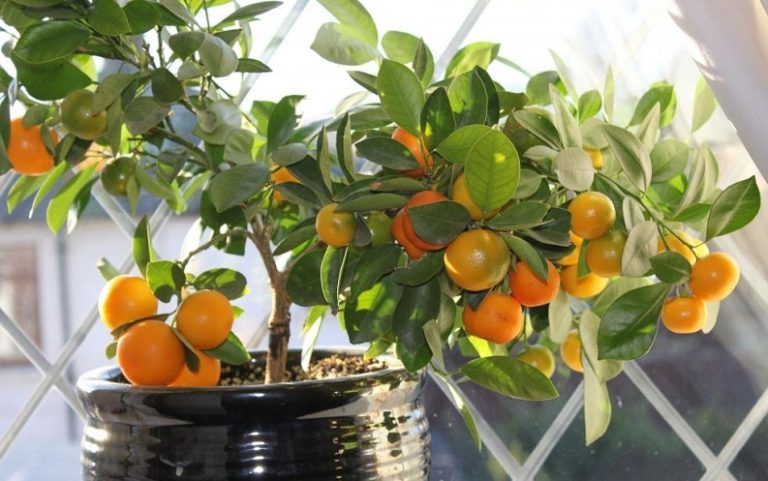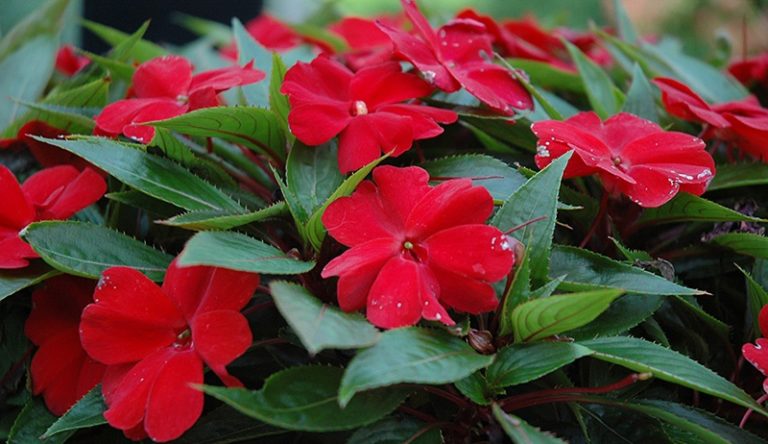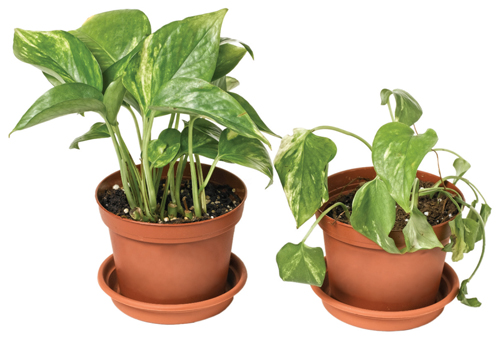Aechmea – care
Aechmea is a perennial ornamental plant from the bromeliad family. The leaves are elongated and have serrated edges, sometimes with thorns, gathered in monochromatic or variegated rosettes depending on the species. The flowers are collected in a complex inflorescence, the peduncle grows from the middle of the rosette.
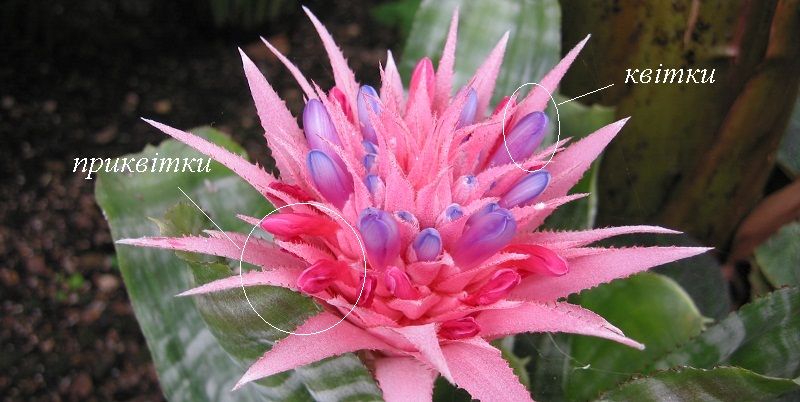
The bracts of the aechmea are protruding pink-red, in which small flowers with a bluish-pink color of the petals are hidden. Aechmea blooms in early spring or summer, sometimes in November or December.
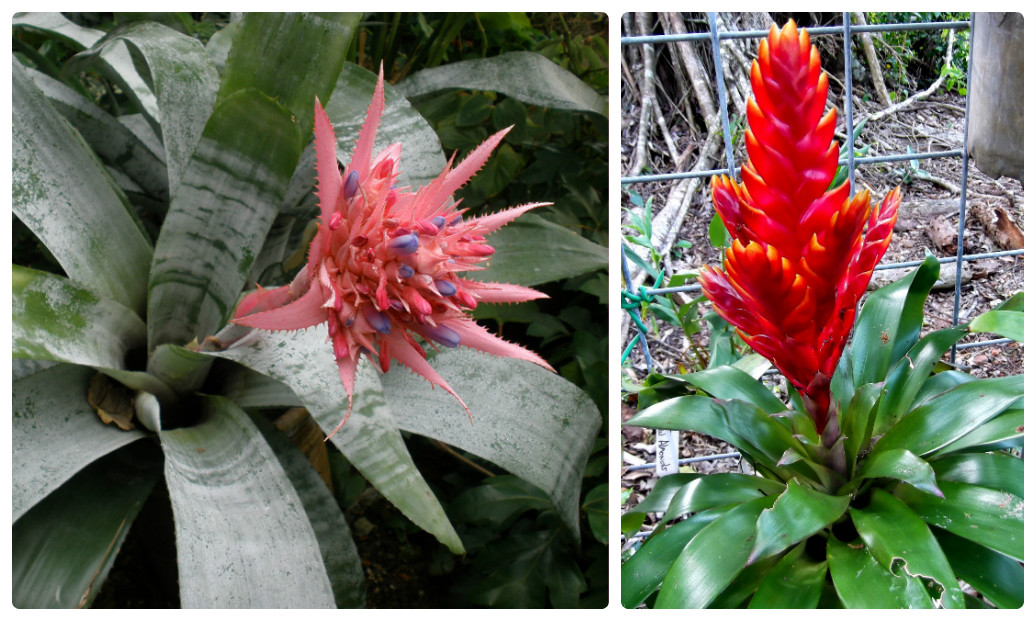
Types of aechmea
The following species are adapted to room conditions: Aechmea pink, Aechmea dull red, Aechmea blue, Aechmea brindle, Aechmea striped, Aechmea sparkling, Aechmea two-color and others.
- Найбільш невибагливою є – ехмелія двоколірна (A. Discolor), і ехмелія блискуча.
- Aechmea is bicolored, its leaves are green on top and reddish-purple on the bottom.The inflorescence of the echmelia has pink bracts and numerous bright red small flowers.
- Aechmea is shiny, the leaves are green above, reddish-purple below. Inflorescences with pink bracts and bright red small numerous flowers with blue petals.
- The most decorative aechmea is striped, it can most often be found on sale. Its amazing pink multi-layered inflorescence blooms from mid-summer and does not fade until winter.

How to care for aechmea
Aechmea is an unpretentious plant, it is easy to care for if you follow all the requirements listed below.
Light brightness for aechmea
Aechmea is a photophilous plant, but tolerates partial shade well, do not allow direct sunlight to hit the plant, especially at lunchtime. So, the best place for this plant is west or east windows. In summer, aechmea can be taken out to the balcony or yard, gradually accustoming it to bright light. The room in which the plants are located must be ventilated from time to time.
Air temperature for aechmea
For the normal growth and development of aechmea, a temperature of + 20-+26 degrees C. Aechmea reacts positively to a slight difference in night and day air temperature. In winter, the air temperature should not fall below +18 degrees C, at lower temperatures the plant may die.
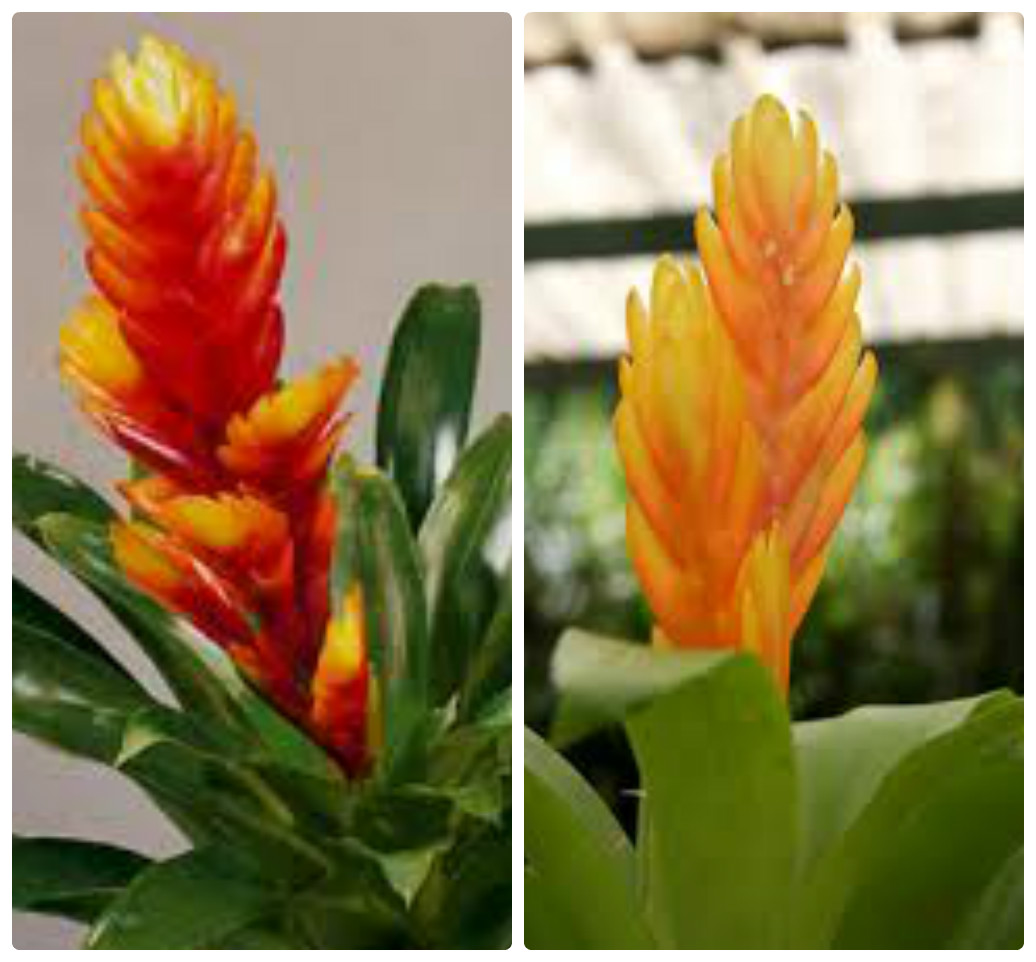
Watering and humidity for aechmea
Water for watering aechmea should be soft, at room temperature. During the period of active growth (April – October), aechmea is watered often so that the earthen ball is slightly moist all the time. From November, watering should be reduced, added as the topsoil dries.
In summer, on hot days, aechmea is watered in the middle of the rosette of leaves (without fertilizers), but there should not be water there all the time – otherwise the leaves will rot (such watering should be done 1 time in 7 days).
Air humidity for aechmea in the summer months should be high. Spray aechmea 2 times a day.
How to feed aechmea
During the period of active growth (spring-summer), we feed the plant every 14 days, using a complex mineral fertilizer for flowering indoor plants. The dose should be reduced by half that indicated in the instructions. When watering into the outlet, fertilizers cannot be added – this procedure can destroy your plant.
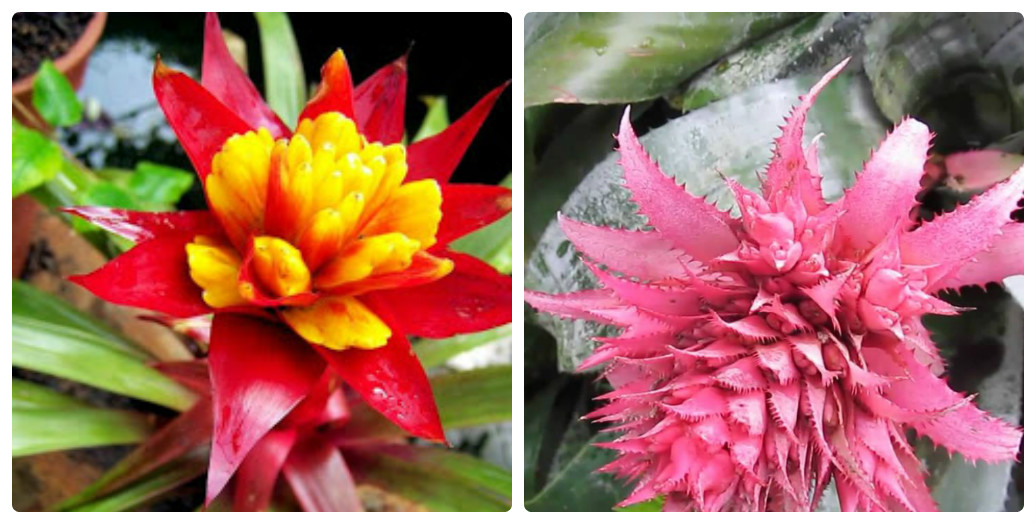
When to transplant aechmea
Young shoots of aechmea are transplanted as needed if the pot becomes cramped. An adult plant does not need a transplant, because after flowering, its central mother part dies off, and the plant that has bloomed dies. Over time, the echmelia must be planted or transplanted into a wider pot, as the plant grows in width. Aechmea requires light air and permeable fertile soils. In flower shops, you can buy ready-made soil for bromeliads, or you can prepare the soil mixture yourself. The soil mixture for aechmea should consist of: soddy and leafy soil, sand and humus or copmost (2:2:1:1) with the addition of sphagnum and coal. For planting, it is better to choose a wide pot. At the bottom of the pot, it is imperative to make a hole to drain excess water and pour a layer of drainage that will protect the plant from stagnant water.
See also:ORCHIDS – ORCHID CARE
Reproduction of aechmea
Aechmea propagates by shoots and seeds.
Young shoots are separated from the mother base, then when the height of new plants reaches up to 20 cm, they must also have their own well-developed roots. Carefully cut off from the mother plant, and the cut is sprinkled with crushed charcoal and, after a little drying, the new plant is planted in a separate pot. It will bloom in 18 months.
Plants grown from seeds bloom for 3-4 years.
Pests and diseases
Echmelia is threatened by pests such as: spider mites, scale insects.
All diseases occur with improper care.
The leaves begin to turn brown – the air temperature is too low, the plant has begun to rot or hypothermia of the root system.
Pale brown spots on the leaves are sunburn.
No flowering – not enough light.
Leaves turn yellow – overflow
Leaf tips dry – increase humidity

